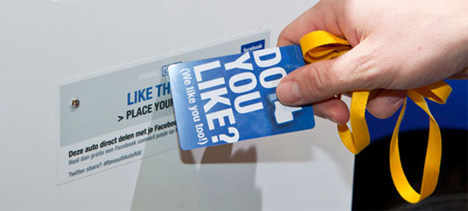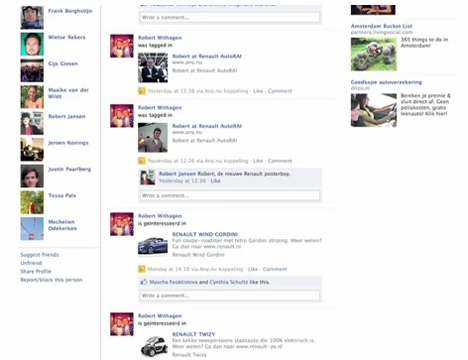
As more and more of our lives are lived out online, it has become common to see our meatspace interactions intersecting with our cyberspace ones. Delivering location updates via FourSquare, tweeting real-time reviews of restaurants and movies, posting pictures of your activities to Facebook via mobile phone while the action is happening – these are all things we consider normal. At the AutoRAI 2011 in the Netherlands, a new method for connecting real life and online life was introduced.
Visitors were given RFID cards that they connected to their Facebook accounts. After checking out a Renault car that they liked, they could then swipe the card across a special pillar to “like” the car on Facebook. A picture and short description of the car were posted to the user’s wall along with their approving thumbs-up.

The clever marketing technique used by Renault to share details about their cars could easily be expanded to include other offline objects. Imagine “like” buttons appearing on bars, movie theaters, parks, or book stores. Instead of filling out comment cards, patrons would instantly share an opinion with all of their friends. Plenty of businesses already plead with their customers to “like us on Facebook!” So why not make it simpler to do that? As an added bonus, since customers would be posting to their own Facebook wall and not using some anonymous comment system, the meaningless flames might be kept to a minimum.

